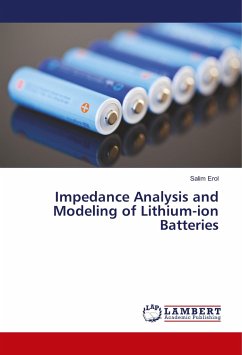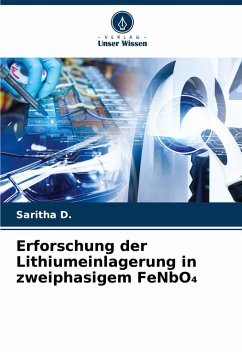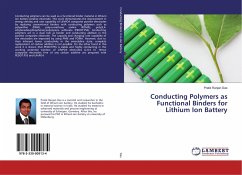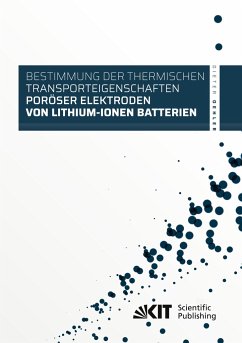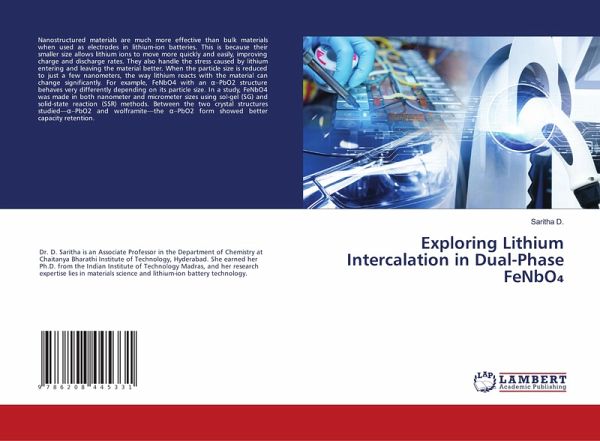
Exploring Lithium Intercalation in Dual-Phase FeNbO¿
Versandkostenfrei!
Versandfertig in 6-10 Tagen
29,99 €
inkl. MwSt.

PAYBACK Punkte
15 °P sammeln!
Nanostructured materials are much more effective than bulk materials when used as electrodes in lithium-ion batteries. This is because their smaller size allows lithium ions to move more quickly and easily, improving charge and discharge rates. They also handle the stress caused by lithium entering and leaving the material better. When the particle size is reduced to just a few nanometers, the way lithium reacts with the material can change significantly. For example, FeNbO4 with an -PbO2 structure behaves very differently depending on its particle size. In a study, FeNbO4 was made in both nan...
Nanostructured materials are much more effective than bulk materials when used as electrodes in lithium-ion batteries. This is because their smaller size allows lithium ions to move more quickly and easily, improving charge and discharge rates. They also handle the stress caused by lithium entering and leaving the material better. When the particle size is reduced to just a few nanometers, the way lithium reacts with the material can change significantly. For example, FeNbO4 with an -PbO2 structure behaves very differently depending on its particle size. In a study, FeNbO4 was made in both nanometer and micrometer sizes using sol-gel (SG) and solid-state reaction (SSR) methods. Between the two crystal structures studied- -PbO2 and wolframite-the -PbO2 form showed better capacity retention.




